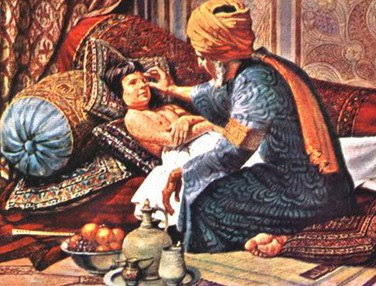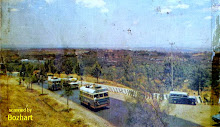Coffee History
Coffee history begins from the ancient land of Abyssinia, now called Ethiopia, the birthplace of coffee. We do not know exactly when or by whom coffee was found. The coffee history derived from various legends that exist, the most interesting is the legend about the goat dance. An Ethiopian goatherd named Kaldi, enjoy to follow the path created by a goat where they are combing the mountains looking for food. The work is not required much time, so he's free to make a song and playing his pipe. In the afternoon, when he blew his pipe, goat shepherd ran from where they forage in the forest to follow him back to the house.
On the afternoon, the goat did not come. Kaldi blew his pipe again, this time with a loud voice. The goat was still not appeared. Confused, the boy climbed to the higher ground, to listen to them. He finally heard the distant sound of bleating.Kaldi ran to follow their trail and then suddenly appearing in front of the goats. Under the shade dense rainforest, which allows the sun streaming through the leaves suddenly, goats walking around, butting to one another, danced in their hind legs, and bleating excitedly. The boy stood gaping see them. They had been bewitched, he thought.
When he saw, a goat one by one chewing the shiny green leaves and red fruit from the tree that he had never seen before. It must be the tree that makes the goats became insane. Is it toxic? Are they all going to die? Her father will kill him!
the goat refused to go home with him until a few hours later, but they are not die. The next day they ran back into the same forest to repeat what he and the goats were done yesterday. This time Kaldi decided to follow what they did. First he was chewing a few shiny leaves that tasted bitter. When Kaldi chewing the leaves, he suffered slow tingle, moves from his tongue into her stomach, and extending throughout his body. Next he tried the fruit. It felt a little bit sweet and appears seeds covered with a thick fruit peel and slimy tasty. Finally, he chewed it. And other berries appear in the mouth.
Soon, according to legend, Kaldi and his goats with agile singing songs and poetry. She felt that she will never feel tired or grouchy again. Kaldi told his father about the magic tree, then the news spread out, and coffee soon become an integral part of Ethiopian culture.
There is a possibility, as in the legend, beans and coffee leaf bunn as is called in that time just chewed. But Ethiopia with their creativity, quickly discovered a more suitable way to get caffeine. They brew the leaves and fruit with boiled water as tea. The coffee beans are ground and mixed with animal fat for a quick-energy snack. They make wine from fermented pulp. They make a sweet drink is called qishr from lightly roasted husks of the coffee cherry, a drink that is now well-known as kisher.
At that time, a Persian physician Rhazes (865-925 AD), was first mentioned that coffee is printed in the tenth century, the coffee tree might have been deliberately cultivated for hundreds of years. Rhazes wrote about bunn and a drink called buncham in a medical text that now has been lost. Around 1000 CE, another Arab physician Avicenna, wrote of bunchum, which he believes comes from the root. he wrote, "It fortifies the members, cleanse the skin, reducing the moisture in the surrounding areas, and provide an excellent smell to all the body". Although Rhazes and Avicenna may have written of some of the types of coffee, they do not explain how to processed it. Maybe only after about the fifteenth century there are people who bake the seeds and grind them, and they poured it.Coffee as we know it today finally came into being.
Ethiopia still serving coffee at an official event which usually almost an hour.Charcoal warmed a special clay pot and then the guests sat on three-legged stools for chatting. When the host and his guests talk, wife carefully washed green coffee beans to remove the smooth skin. Coffee beans which have been dried, they removed the husks by hand. The hostess threw a little incense on the coals to produce fragrances. Then he put a flat iron plate in the top of charcoal, approximately one-foot diameter. By using iron-bent, she gently stirring the seeds in this skillet. After a few minutes the color changed to the color of cinnamon, then began to crack as classic coffee roasting. When coffee beans have turned golden brown, the coffee beans put it in a small mortar. With a pestle, coffee beans grinded became a very fine powder, then mixed with water in clay pot boiling by charcoal. Along with the coffee powder, he also includes some cardamom and cinnamon.
The smell of the coffee is very exotic and outstanding. He poured the first round of drinks into a small three-ounce cups without handles, along with a spoonful of sugar. Everyone took a sip and give appreciation. Thick coffee, with coffee powder hanging in the top of the cup. When the cup drained, most of the sediment remains on the bottom.
Twice more, the hostess adding a little water to boil coffee. Then the guests took leave come home.




